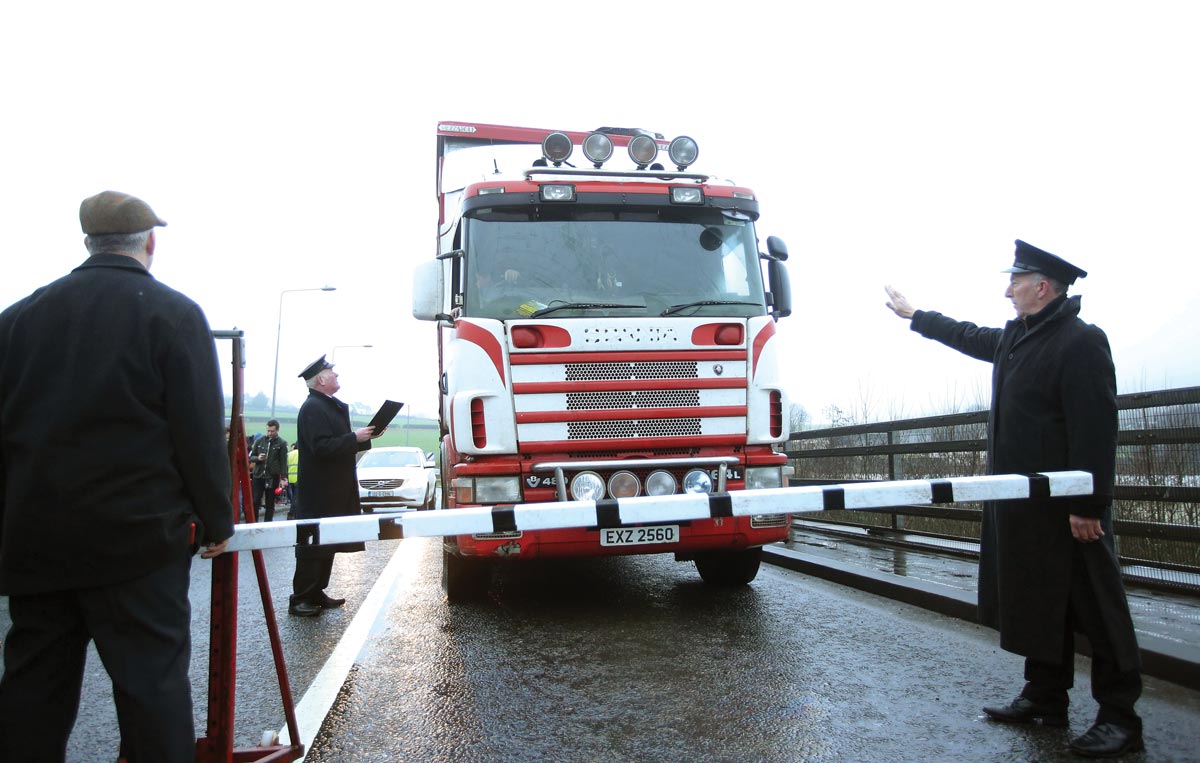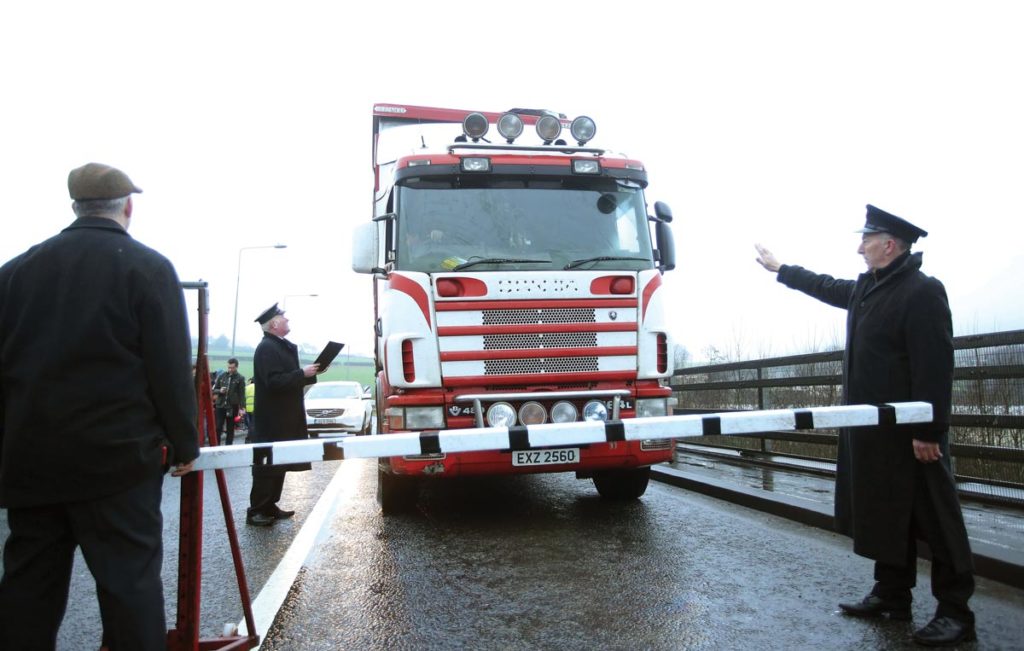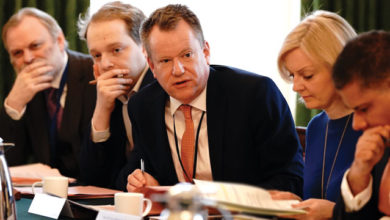Brexit and cross-border trade

Geographic location and economic interaction both place Northern Ireland in a particularly exposed position to changes in the economic relationship between the UK and EU, writes Economic and Social Research Institute (ESRI) Associate Research Professor Martina Lawless.
The impact of Brexit on cross-border trade flows will of course depend on the relationship that replaces the current free market and customs union, so precision on how much will change and how the effects might be distributed is not obtainable. However, while the extent of the effect may be hard to pin down with any degree of certainty, existing information on current trade between the EU and non-member countries suggests that focus should be placed as much on non-tariff barriers to trade as on tariffs. In recent research for InterTradeIreland, estimates of the potential trade-reducing effects of non-tariff barriers were almost as substantial as the effects of imposing tariffs.
Looking first at what the imposition of tariffs might mean for exporters into the EU, some quite detailed information is available on what the fall-back position on tariffs would be on the EU side. In the absence of a specific trade deal being agreed by the date Brexit comes into force then the tariff rates that the EU currently applies to third countries under World Trade Organisation (WTO) arrangements are likely to become the default and will therefore set the outer parameters which trade negotiations would operate.
Of the 5,000 individual products that are listed with the WTO, the variation across is considerable with tariffs ranging from zero per cent to over 80 per cent. The sectors with the highest tariffs all fall within the broader headings of food, clothes and tobacco products. Countries in the EU either exporting or importing these products to and from the UK face very different tariff barriers from those producing other types of manufactured products and particularly those exporting higher technology products such as electrical and telecommunications equipment or precision instruments which attract tariffs not far from 1 per cent. As cross-border trade has considerable agri-food content, where higher tariffs are in general applied, the overall impact on Northern Irish trade to the EU is likely to be greater than that estimated for the UK as a whole.
A hypothetical scenario where tariffs were applied to 2016 trade data showed exports from Ireland to Great Britain and to Northern Ireland both fall by 8 per cent. The reduction in Northern Ireland to Ireland trade is higher at 11 per cent, driven largely by the high share of the dairy sector in Northern Irish trade which would face average tariffs of between 50 per cent and 60 per cent. Trade from the rest of Britain to Ireland falls by more modest levels, reflecting the much lower share of trade accounted for by the agri-food sector.
Adding in an estimate of possible non-tariff barriers increases the extent of the trade falls in all directions. The size of the increase in the fall in trade when non-tariff barrier estimates are included is quite considerable, almost doubling the effect for most of the flows. This emphasises the importance of minimising these barriers even in the case of tariff-free trade being agreed between the UK and EU.
So what are non-tariff barriers and why do they matter? The term “non-tariff barriers” is an extremely broad one that effectively covers any and all policies that restrict international trade flows apart from direct tariffs. These can include quantity limits (quotas) and a wide variety of technical requirements such as licensing, labelling, standards and rules designed to protect health and food safety (although there are often good reasons for safety standards, they can in some cases be used to bias against imports). They also cover requirements on customs inspections and documentation and measures to restrict competition from imports to protect domestic firms.
More onerous customs procedures, whether measured as number of documents, length of time or monetary cost, have been shown to have a negative effect on exporting and more specifically to prevent smaller firms from becoming exporters. This disproportionate effect on smaller firms comes about because many of these costs are a fixed charge per consignment, regardless of how much is being exported. The time, effort and cost of completing customs declarations therefore falls more heavily on firms selling relatively small amounts. There may also be a time dimension to how the introduction of any new requirements affects business. Initially there may be a higher cost as exporters learn about the new procedures and these then become less onerous as the customs routines and documentation become more familiar. The business may also find that a number of simplified customs routines are applicable that can reduce some of the burden.

As cross-border trade has considerable agri-food content, where higher tariffs are in general applied, the overall impact on Northern Irish trade to the EU is likely to be greater than that estimated for the UK as a whole.
These non-tariff barriers, whether rule-based or arising from time taken for documentation to be filed and checked, are likely to move to the forefront of understanding how cross-border trade will operate post-Brexit. Here the previously somewhat abstract distinction between the single market and the customs union becomes crucial. The single market relates to trade between EU members while the customs union imposes a common set of tariffs and rules on imports from other countries entering the EU. If the UK negotiates total tariff-free access to the EU market but withdraws from the customs union (to allow it to negotiate separate trade deals with other countries) then customs checks at the EU border with associated paperwork and risk of delays will be required even though no tariff is due. From an EU perspective, this is to ensure that the UK does not become a “back door” through which other countries can route their products to avoid EU tariffs.
The main impact and driver of the overall effects comes from the effect of tariffs and estimated non-tariff barriers on the food sectors. The importance of the dairy sector to Northern Ireland can be seen in a calculation of the most affected products. Milk and cream, which accounts for 15 per cent of Northern Ireland’s exports, accounts for around half of the overall estimated effect in the scenarios generated in this research and explains why the total trade reductions estimated for Northern Ireland were so much larger than for the rest of the UK. Further exchange rate movement increases the reductions in trade from Ireland to both Northern Ireland and Britain but offsets some of the effect in the other direction.






